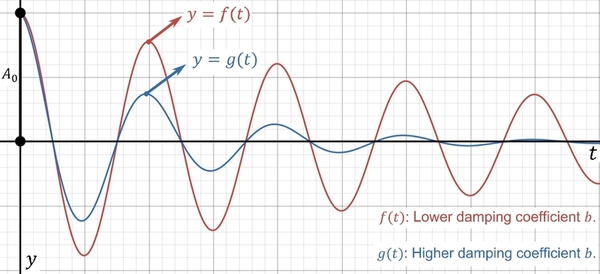The effect of viscous drag on damped simple harmonic motion
(1) Greenwich Country Day School, Greenwich, Connecticut, (2) Early Bird Capital, Inc., New York City, New York
https://doi.org/10.59720/22-182
Dynamic viscosity is a quantity that describes the magnitude of a fluid’s internal friction or thickness. Traditionally, scientists measure this quantity by either calculating the terminal velocity of a falling sphere or the time a liquid takes to flow through a capillary tube. However, they have yet to conduct much research on finding this quantity through viscous damped simple harmonic motion. This phenomenon occurs when the movement of an oscillator experiencing Hooke’s law dissipates at a rate defined by the damping coefficient due to a fluid’s external drag force. The present study hypothesized that the relationship between the dynamic viscosity and the damping coefficient is positively correlated. To test this hypothesis, we computed the dynamic viscosities of glycerol-water mixtures of varying mass concentrations and filmed the oscillations of a vertical-spring mass system in each of these mixtures. We then determined the system’s damping coefficients through Vernier’s Logger Pro video analysis feature and implemented inferential statistics on a regression between these damping coefficients and the mixtures’ dynamic viscosities. The results through these methods demonstrated not only compelling evidence in favor of this hypothesis but also an alternative way to estimate a fluid’s dynamic viscosity through a least-squares regression line. With future experimentation, these results can help prepare shock absorbers for vehicle and structural engineering practices.
This article has been tagged with: